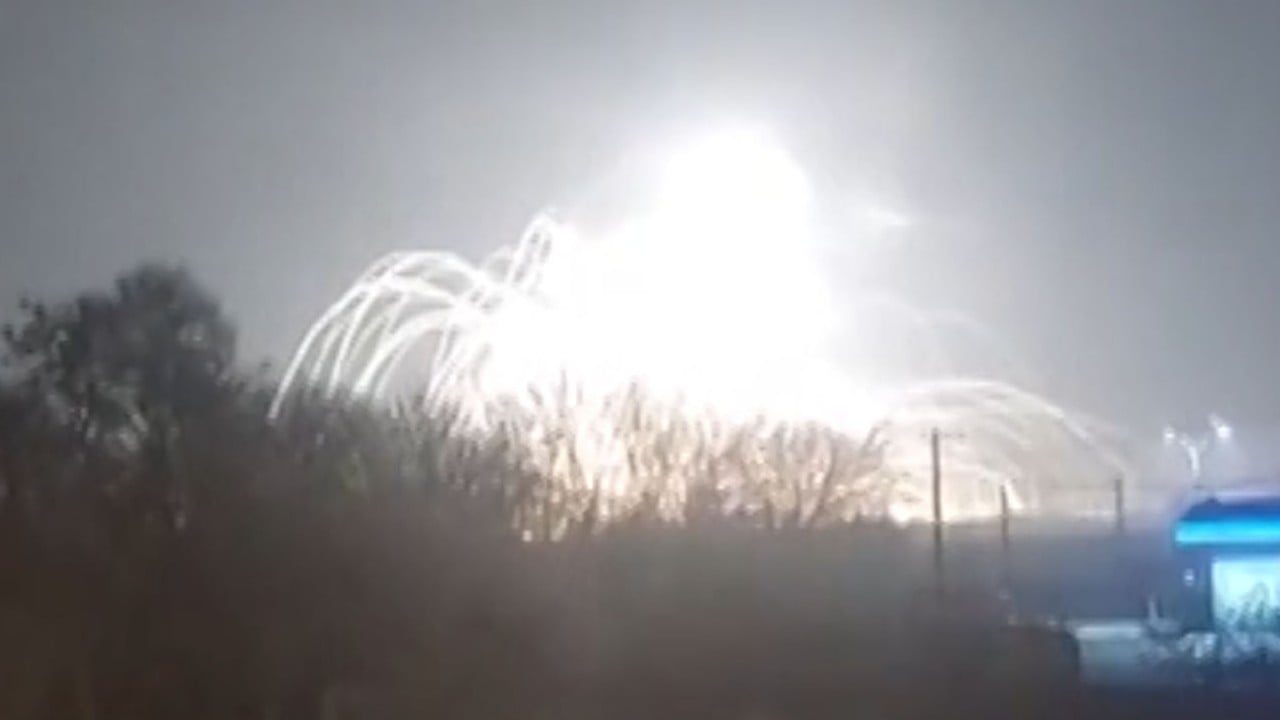
China, told of Ukraine move in advance, asked Russia to wait until Olympics ended: sources
- The closing Olympic ceremony was held on February 20 in Beijing; the Russian invasion of Ukraine started at dawn on February 24
- It is unclear whether the exchange took place in a direct conversation between Xi Jinping and Vladimir Putin or through other senior channels, a source says
Senior Russian officials told their Chinese counterparts on February 4 that Moscow was going to conduct a military operation in Ukraine, according to two sources with ties to the White House who cited US intelligence. They added that China stopped short of supporting or opposing the move but asked Moscow to hold off until after the Beijing Olympics ended.
Russian President Vladimir Putin met that day with President Xi Jinping shortly before the opening of the Winter Olympics – their first face-to-face meeting in two years – and issued a 5,364-word statement describing their strategic partnership as one characterised by no “forbidden areas of cooperation”.
The statement, which did not mention Ukraine by name, also said the two authoritarian states would build a new global order, decried “certain states” trying to impose their own standards of democracy and expressed opposition to “further enlargement of Nato”.
It is apparent that what the Chinese understood in early February was very different from what transpired, one of the sources said, adding that it was wrong to say that Xi was “played” or “lied to” by Putin.
The source added that it was unclear whether the exchange took place in a direct conversation between Xi and Putin or through other senior channels. The source added that it was apparent from Beijing’s lack of warning to its approximately 6,000 citizens stranded in Ukraine in recent days – amid news that a Chinese national was wounded by gunfire – that it did not expect a major war.
The second source confirmed the sequence of events, which were first reported by The New York Times.
The Chinese embassy in Washington issued a denial on Wednesday. “The claims are speculations without any basis and are intended to blame-shift and smear China,” said embassy spokesman Liu Pengyu.
“China supports Russia and Ukraine in resolving the issue through negotiation, calls on relevant parties to stick to the general direction of political settlement and seek a comprehensive settlement of the Ukraine issue through dialogue and consultation,” he added.
On February 12, US President Joe Biden called Putin urging him not to invade, a move the Kremlin denounced as “hysteria”.
Chinese state media avoid ‘invasion’ in reports on Russian moves in Ukraine
The closing Olympic ceremony was held on February 20. The next day, in Moscow, Putin convened an unscheduled meeting of Russia’s security council. In a lengthy speech that followed, he claimed that Ukraine was part of Russia and not an independent country. The invasion started at dawn on February 24 from Russia and Belarus with missiles, artillery and tank units.
According to The New York Times, which also cited the February 4 exchange, information on the communication between Chinese and Russian officials was classified, collected by a Western intelligence agency and considered credible by officials who reviewed it. The report was shared and different intelligence services had varying interpretations, The Times said.
In recent months, the Biden administration has shared intelligence with allies and presented declassified material to the public hoping to pressure Moscow into halting any planned invasion. The way US intelligence was used leading up to the invasion, including predictions of an actual date when Russian troops would surge across the Ukrainian border, was highly unusual. In the end the prediction was only a few days off.
Russia repeatedly denied that it was mounting an invasion in the face of the US intelligence disclosures despite posting tens of thousands of troops on the Ukraine border. Moscow claimed they were there for training drills and needed as a precaution against US and Nato aggression.
According to an earlier New York Times report, US intelligence agencies presented their assessment of an imminent Russian attack to Beijing, hoping the Chinese would intercede, but China passed the intelligence on to Moscow and both countries accused the US of fanning tensions.

On February 16, a spokeswoman for Russia’s Ministry of Foreign Affairs made fun of the Biden administration’s warnings, mocking its apparent surety in naming a date. “Good afternoon. Sorry for being a little late,” said Maria Zakharova. “I was just checking whether we were invading Ukraine or not. Spoiler: we are not.”
To date, efforts to find a diplomatic solution to the Ukraine crisis have failed. Vladimir Medinsky, a Putin aide who is leading Russia’s delegation, told reporters that the Ukrainians were set to arrive on Thursday for talks in the Brest region of Belarus, which borders Poland.
Separately, Ukrainian Foreign Minister Dmytro Kuleba said his side was prepared to meet, adding that Russia’s demands had not changed and that Ukraine would not accept any ultimatums.
Additional reporting by Jacob Fromer in Washington


